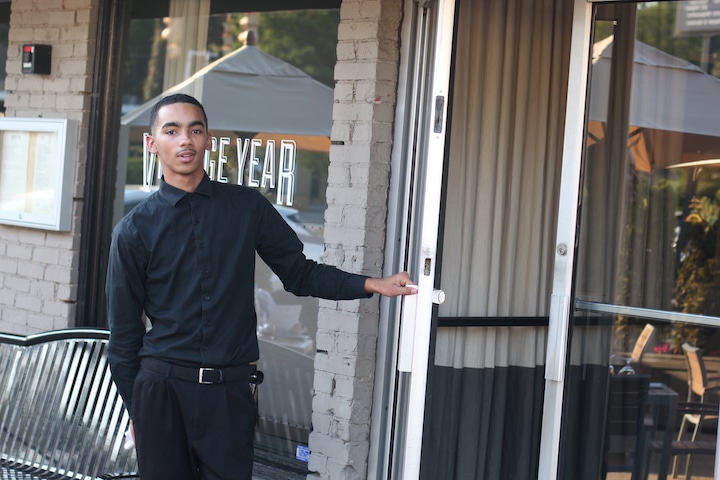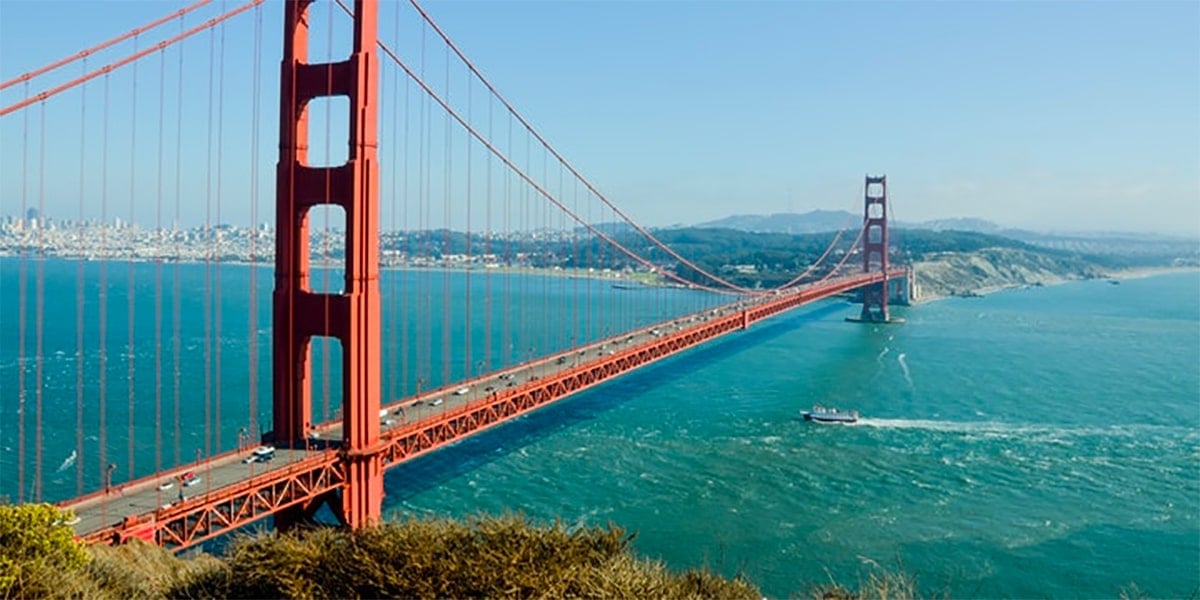
I have to admit that my first look at Alabama’s capital (and the first capital of the Confederacy) was a winner.
Previously somewhat low on my travel radar, Montgomery first got my attention when I heard about the April 26-27 opening of the Equal Justice Initiative (EJI) Legacy Museum and National Memorial for Peace and Justice on broadcast news—a really big deal. The event drew the celebrated and famous. The guest list included U.S. Congressman John Lewis, Vice President Al Gore, Gloria Steinem, Common, John Legend, Ava DuVernay, Patti LaBelle, the Alabama Shakes, a special appearance by Stevie Wonder, and more.
With yet another reason for a stopover (and a momentous one at that), I eagerly hopped on a plane and headed south. I wasn’t disappointed with what I found: a clean, attractive city with broad avenues, the lovely meandering Alabama River skirting the edge of town, dynamic entrepreneurs, the Alabama Shakespeare Festival, a small but interesting art museum, the Harriott II riverboat docked near the Riverwalk Amphitheater, and loads of history. The star, however, is the museum/memorial.

A memorial to racial terror
With Montgomery’s wealth of Civil Rights history, including the three notorious Selma-to-Montgomery, 54-mile marches of 1965, the Equal Justice Initiative—a non-profit legal center—began in 2010 documenting racial terror lynchings in the South. To date, 4,400 such lynchings of black Americans have been chronicled in the years between 1877 and 1950.
On April 26 of this year, a memorial to these victims—the National Memorial for Peace and Justice—opened on a six-acre tract that offers an emotional punch, starting with the sculptural installation of African slaves in chains. Inside the National Memorial for Peace and Justice, open to the outside but covered by a protective roof, more than 800 steel slabs are symmetrically erected and represent the U.S. counties in which lynchings have occurred.

On each slab the names of the victims are inscribed, creating a profound visual of the sheer number of documented cases. As you wind your way to the lower level of the memorial, the coffin-like slabs hang suspended overhead, corpse-like, each symbolizing the horror that drove as many as six million African-Americans out of the rural south to other areas of the nation during the Great Migration (1916 to 1970).
Near the area where African-Americans were bought and sold as slaves, EJI also opened the Legacy Museum at 115 Coosa Street, which chronicles black history from enslavement to the mass incarceration of today. Expect to be stirred emotionally and intellectually by the often-abject displays, beginning with holograms of slaves telling their often heartbreaking tales from “slave pens.”
Civil Rights history
Montgomery justifies its claim to being the birthplace of the Civil Rights movement through the efforts of the intrepid Rosa Parks, who in 1955 refused to give in to Jim Crow and sit in the back of the bus. A historic marker located at Molton and Montgomery honors the site of her arrest, an event that launched the successful 381-day bus boycott. Among the artifacts related to Parks and the boycott, the nearby Rosa Parks Museum exhibits her original arrest fingerprint, court records, and police reports as well as a 1955-era bus similar to the one related to the Parks incident.

Along broad Commerce Street, another marker identifies the warehouse area where slaves were held for sale. After the passage of the Act Prohibiting Importation of Slaves in 1807, the center of the slave trade moved from Charleston and Savannah to Montgomery. Slaveholders from the more established slave states sent slaves to Montgomery to be sold to purchasers from states further west.
Today the warehouses have been converted to alternate uses, and along Commerce Street you’ll find entertainment venues like Escapology, the Hank Williams Museum (a native of Mount Olive, Alabama, he’s buried in Montgomery’s Oakwood Annex Cemetery) and the Aviator Bar. The latter pays tribute to the city’s aviation history (the Wright Brothers opened the nation’s first civil aviation school in town and Tuskegee, home to the celebrated Tuskegee Airmen, is 37 miles away). The bar attracts service personnel from nearby Maxwell Air Force Base with its aviation-themed decor that includes model planes dangling from the ceiling and a slew of military memorabilia.

Almost cater-corner to the state capitol (fronted by a statue of Jefferson Davis) up near the crest of Dexter Street, the first church where Dr. Martin Luther King, Jr., served as pastor (from 1954 to 1960) is open for tours. Now named for the Civil Rights icon, the Dexter Avenue King Memorial Baptist Church is a national historic landmark. During his years as pastor, Dr. King and his family lived in the parsonage just around the corner at 309 S. Jackson. The parsonage-turned-museum housed 12 of the church’s leaders and holds furniture used by Dr. King during his residency. A plaque on the porch references a nearby hole that marks the bomb attempt made by segregationists in 1956.
Tip: If you’re in town on Sunday morning, you might want to attend the moving church service in the handsome red brick building.

Art + theater
About a ten-minute drive from downtown, Blount Cultural Park is the creation of philanthropist Winton Blount, U.S. Postmaster General from 1969 to 1972, and his wife Carolyn. The 250-acre park, inspired by the English countryside, is home to the Alabama Shakespeare Festival, which offers staging of works by the Bard as well as musicals, American plays and classics. Two theaters, built largely by a $21.5 million gift from the Blounts, draw an estimated 300,000 annual playgoers. Newly appointed artistic director Rick Dildine also expects to continue the festival’s Southern Writers’ Project that fosters new works with southern themes.
The gem-like and amazingly interesting Montgomery Museum of Fine Art sits on an aesthetically appealing spot in Blount Cultural Park. The museum’s eclectic collections are attractively displayed and definitely worth a visit of at least an hour or two.

Downtown Montgomery
Heralding a revitalization of the downtown area, the former S. H. Kress department store has been revamped to include office, retail and residential elements under one roof while maintaining the 1928 building’s Greek temple facade, Art Deco flourishes, terrazzo tile floors and ornate plaster moldings. Now named Kress on Dexter, the first floor sported a festive opening reception of an exhibit of regional art on the evening of my visit. During the lively, well-attended opener, I managed to speak with African-American artist Sydney Foster (staff photographer for Alabama governor Kay Ivey), who stressed the importance of the gallery as a vehicle for aspiring artists like herself to exhibit their work.
One vital component of the facility found just outside the gallery is the Storybooth, a facsimile of the old phone booths that dotted the urban landscape in the days before cell phones. The Storybooth allows residents to record their personal “living history” stories. The recordings are then filed in a free public archive accessible to anyone online.

A couple blocks away at 129 Coosa, the stylish, upscale-yet-casual Central restaurant gets the #1 rating among Montgomery restaurants on TripAdvisor. The kitchen cooks up local and seasonal ingredients in an often-spectacular style. Menu highlights include appetizers like “jerk octopus” and a charcuterie board with local and domestic cheeses, smoked meats, and inspired condiments plus entrees like “rabbit and ramp spatzle” and the “sweet tea brined 1895 pork chop.”
At 424 Bibb Street, Montgomery’s newest brewery opened in a 73-year old building in April. Common Bond gets its name from the “relationships that can be forged over a few shared pints” and is making its own contribution to the downtown area’s entertainment environment.

A nod to literary renown
In the affluent and appealing Cloverdale neighborhood, literary giant F. Scott Fitzgerald, his wife Zelda and their daughter Scottie lived in a modest house at 919 Felder in 1931 and 1932. Now a museum with some Fitzgerald-era original artifacts, the home is credited as the place where Zelda wrote portions of “Save Me the Waltz” and F. Scott penned sections of “Tender Is the Night.” A two-room apartment on the upper floor recently became an overnight rental available through Airbnb.

Take me out to the ball game
Join the baseball-happy crowd downtown at Riverwalk Stadium for a Biscuits game. A double-A affiliate of the Tampa Bay Rays, the Biscuits play Southern League teams in a sparkling stadium that featured both fireworks and a parachute drop on the evening of my visit (Military Appreciation Day).
For more information on travel to Montgomery, AL, visit website visitingmontgomery.com.








Thanks so much for this great piece on what’s happening in the “New” Montgomery, Alabama!